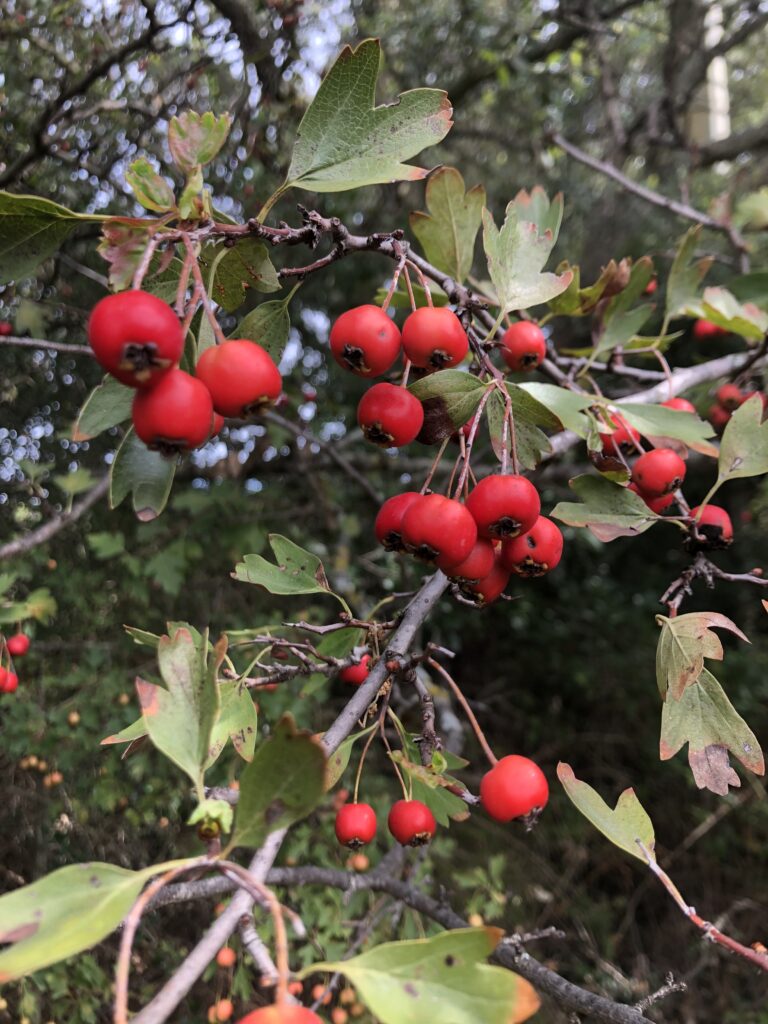
Hawthorn, known for its heart-healing properties and deep symbolic connections to the natural and spiritual worlds, has been revered for centuries across many cultures.
History and Origins of Hawthorn
Hawthorn belongs to the Crataegus genus, and evidence of its existence dates back to the Neolithic period, suggesting that our ancestors likely foraged its berries (called haws) thousands of years ago. Originating in temperate regions of the Northern Hemisphere, particularly in Europe, Asia, and North America, hawthorn has played a crucial role in folklore, medicine, and myth.
In ancient Greece, hawthorn was dedicated to Hymen, the god of marriage, and its blossoms were often used to decorate bridal chambers. The plant also has a long association with heart health, a connection first recorded by Dioscorides, the Greek physician, in the 1st century CE. The plant was not only used for medicinal purposes but also as a sacred symbol. It was and is still often found near sacred wells and megalithic sites, especially in Britain and Sardinia, signaling its importance in both spiritual and daily life.

Harvesting Haws
Haws, the bright red hawthorn berries, ripen in the fall and are best harvested after the first frost when they become sweeter. When harvesting, it’s essential to use caution as the tree’s thorns can leave marks on your skin, a small price to pay in the gift exchange of foraging. Traditional folklore teaches that hawthorns are often associated with fairies and should not be disturbed recklessly. In Ireland and Scotland, it is considered bad luck to cut the branches while the tree is in bloom, as it could anger the fairies that guard the plant.
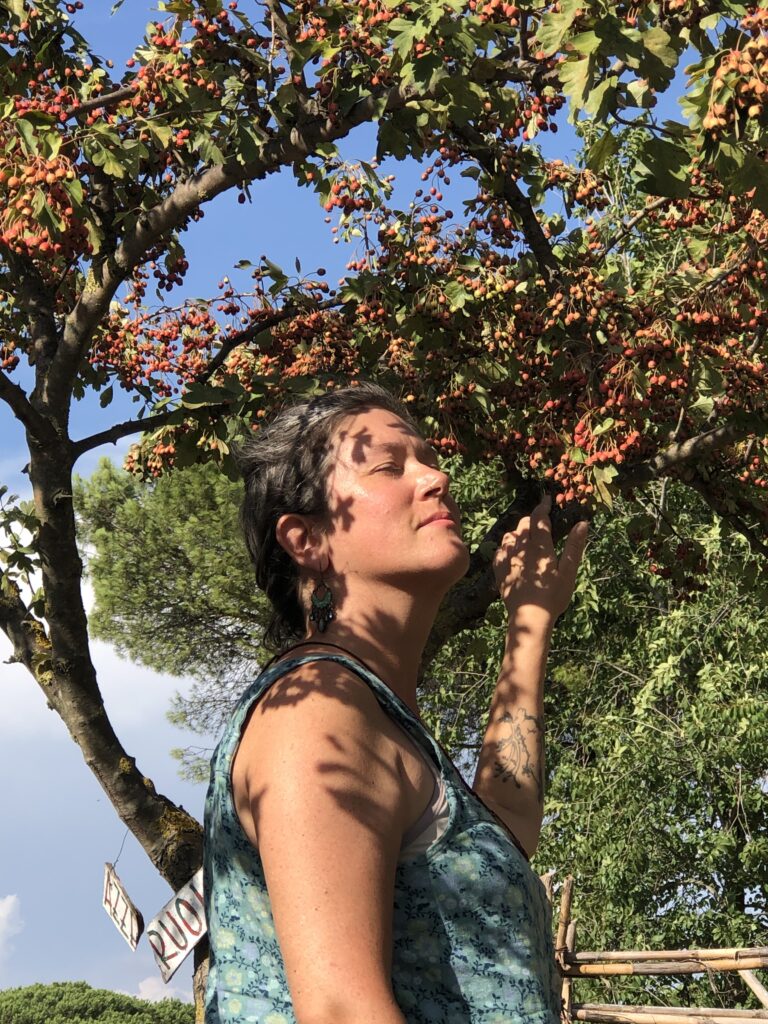
The author enjoying a hawthorn tree in Rome, Italy
Folklore & Myth
Hawthorn is famously linked to the fairies of Celtic mythology, with many ballads recounting how this tree serves as a portal between worlds. In the story of Thomas the Rhymer, a hawthorn tree stood where he encountered the Queen of Elfland, receiving the gift of prophecy. The tree’s status as a threshold plant also means that it serves as a bridge between life and death, the human and fairy worlds, and the physical and spiritual realms.
In Britain, hawthorn has long been considered a tree of love, frequently used in Beltane celebrations, where it is hung over doors to ward off negative energy and invite prosperity. The plant’s thorny branches and delicate flowers are also symbolic of the balance between beauty and protection—a reflection of how love can be both tender and fierce.
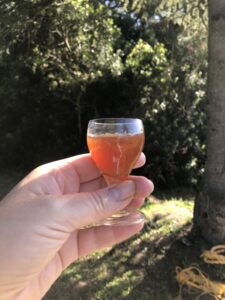
Hawthorn Elixir
Recipe for Hawthorn Elixir
After delving into the rich heritage of hawthorn, it’s time to put that history to practical use by making a heart-warming hawthorn elixir. This recipe, inspired by the From the Wild Edge course was taught to me by herbalist Seraphina Capranos from The Center for Sacred Arts, which merges traditional wisdom with a touch of modern magic.
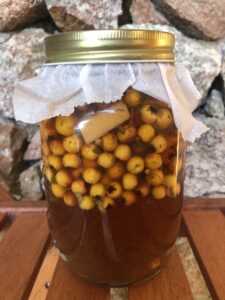
hawthorn elixir macerating
Ingredients:
1 cup dried hawthorn berries
2 Tablespoons dried hibiscus flowers
3 cardamom pods, crushed
1 vanilla bean, sliced lengthwise
1 cinnamon stick
1 quince (or apple), peeled, seeded, and chopped
1 Tablespoon fresh grated ginger
Zest of 1 lemon
1/3 cup fresh lemon juice
1/2 cup honey
2 cups brandy
1-quart jar
Method:
1. Gently place all the fruits, herbs, and spices into a clean quart-sized jar, layering them carefully.
2. Pour the lemon juice, honey, and brandy over the mixture, letting each ingredient flow in with intention. As you do, infuse the blend with your heart’s desires, visualizing the love and vitality you wish to bring forth.
3. Secure the jar and give it a gentle shake. Then, place it in a safe space where it can rest and infuse for one month.
4. During this time, remember to shake the jar each day. As the mixture transforms, take a moment to focus on your own heart and the intentions you’ve woven into this elixir.
5. After about a month, strain the liquid and savor the first taste of your magical creation.
6. Bottle and label your elixir, storing it in a special place. Be sure to enjoy it within a year, keeping its magic alive.
The first time my husband and I tasted this elixir, we were both affected by its energy. It is one of our favorite after-dinner digestives on special occasions. I also sometimes use it in ceremonies.
This elixir not only serves as a heart tonic but also as a reminder of the ancient practices that connect us to the land and to our ancestors.
If you’d like to explore more about hawthorn and other magical plants, check out my book Witches’ Brews—Teas, Sauces & Other Potions: Old World Lore & Recipes from Hearth & Hedge in the Old Ways for Modern Days Library. It is a full-length book released in monthly issues cumulating into 40 seasonal recipes, plus history, folklore, health, and magical properties for about 30 sacred plants (especially ones from folklore and fairytales!)
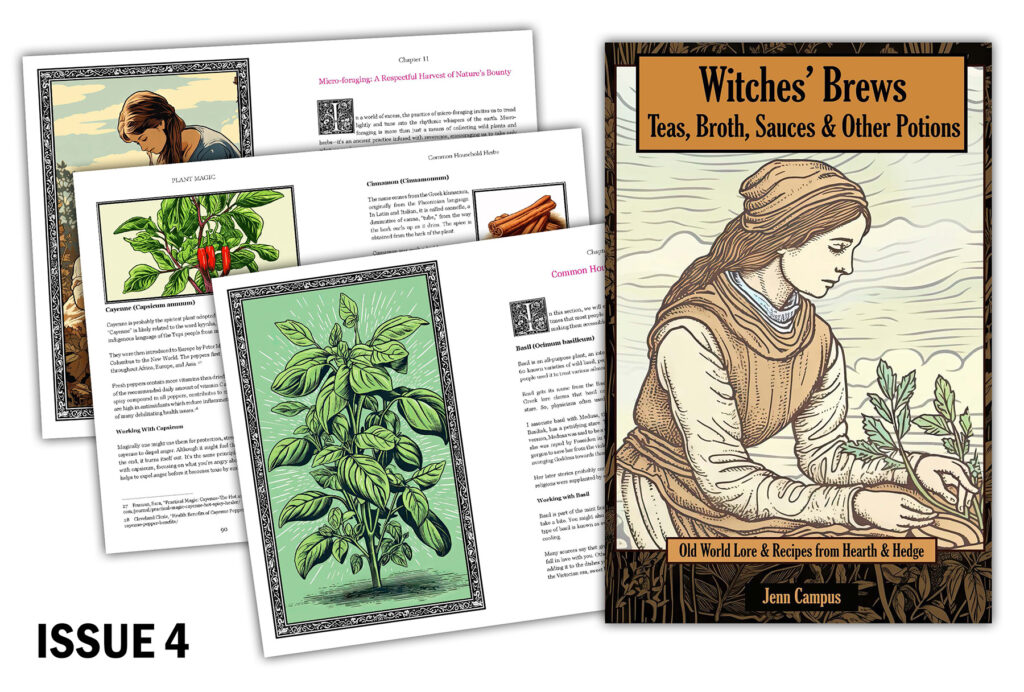
Related Posts:
Thresholds to the Otherworld: Thorn & Hedge Magic
Late Autumn Old World Fruits: Quince (part 1)
Micro-Foraging: A Journey of Heart, Land, and Spirit
The Mysterious Domus de Janas: Unveiling Sardinia’s Fairy Houses

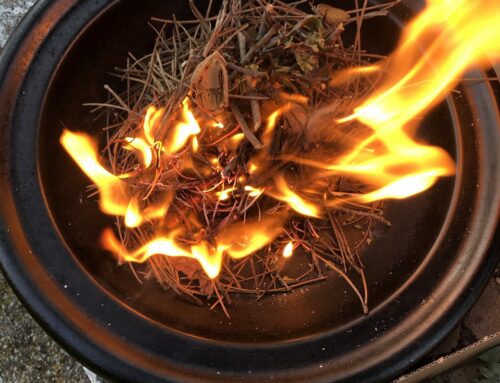
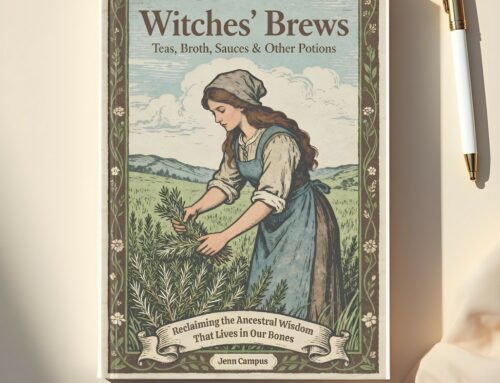



Leave a Reply